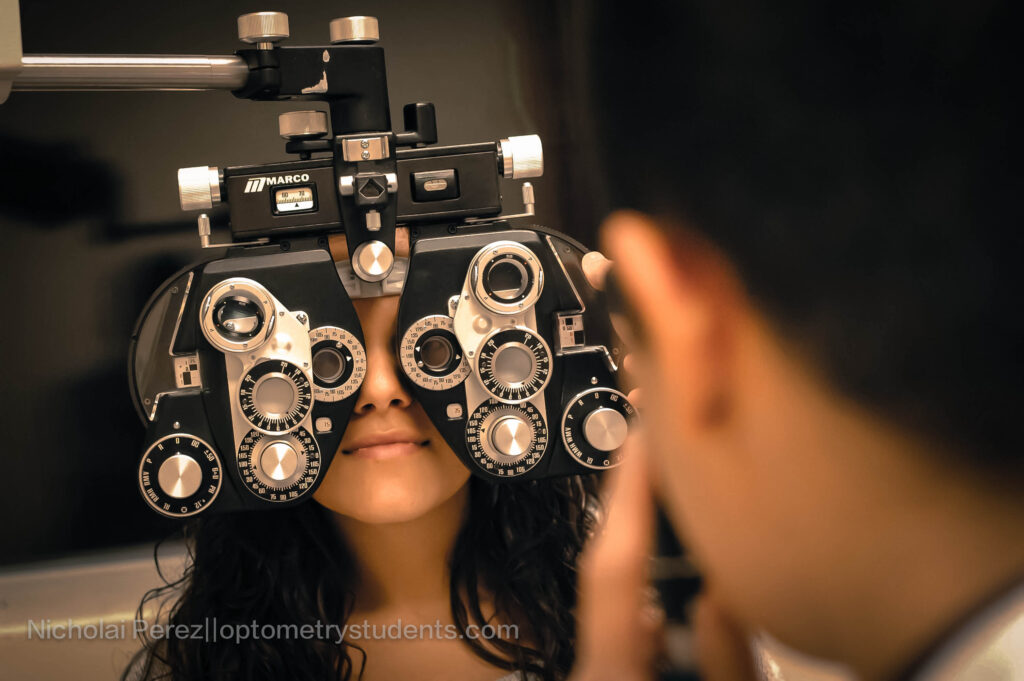At this year’s AOA Meeting, I sat in on an interesting lecture by Fraser Horn, O.D., a Nike, Inc. consultant and professor at Pacific University College of Optometry. Sports vision is currently a hot topic in optometry and Dr. Horn encourages his colleagues to incorporate sports vision in their practices. He uses the sport of football to give a broad overview of certain visual skills to analyze and train.
Dr. Horn uses examples of the following four positions in football: Quarterback, Wide Receiver, Linebacker, and Kicker. The following are certain visual skills important to each position with their corresponding in-office training therapies.
| POSITION | VISUAL SKILLS | TRAINING |
| Quarterback | Visual acuity | Prisms/lens sorting, Hart chart with isolated letters (blur interpretation) |
| Stereopsis | Lifesaver card, bucket toss, Brock string | |
| Wide receiver | Contrast | Use filters (ie. snow goggles) during activities |
| Depth perception | See “Stereopsis” above | |
| Eye-hand coordination | Test quickness with Wayne saccadic fixator, MOART, Reaction Plus | |
| Peripheral awareness | Wayne, Sacc fixator, Sanet integrator, juggling | |
| Dominant eye | Place athlete on field that promotes binocularity | |
| Linebacker | Eye-hand coordination | See above |
| Peripheral/Soft Focus | Touch boards | |
| Balance | Activities on balance ball/beam | |
| Kicker | Fixation | Visual processing activities ie. Add metronome |
| Eye-foot coordination | Test reaction time | |
| Peripheral awareness | See above |
Dr. Horn emphasizes the importance of a thorough refraction. Factors to consider may be adding -0.25 to -0.50 D extra for improved VA and contrast in myopes or a small amount of plus for relief of eyestrain in hyperopic athletes.
Contact lenses are one of the most popular choices for athletes. Comfort and good VA are of utmost importance in sports performance. Fitting with several different kinds may be necessary to find the perfect fit. Recommendations are daily disposables fitting slightly tighter and having low to moderate water content.
 There are visual demands in every sport which, depending on what sport and which position the athlete plays, will guide your examination and the therapy needed to enhance play on the field. Overall, key skills to assess and train are visual acuity, contrast, peripheral vision, and eye- hand/foot/body quickness. If you have an interest in sports vision, have fun and explore the opportunities in this area of optometry!
There are visual demands in every sport which, depending on what sport and which position the athlete plays, will guide your examination and the therapy needed to enhance play on the field. Overall, key skills to assess and train are visual acuity, contrast, peripheral vision, and eye- hand/foot/body quickness. If you have an interest in sports vision, have fun and explore the opportunities in this area of optometry!


